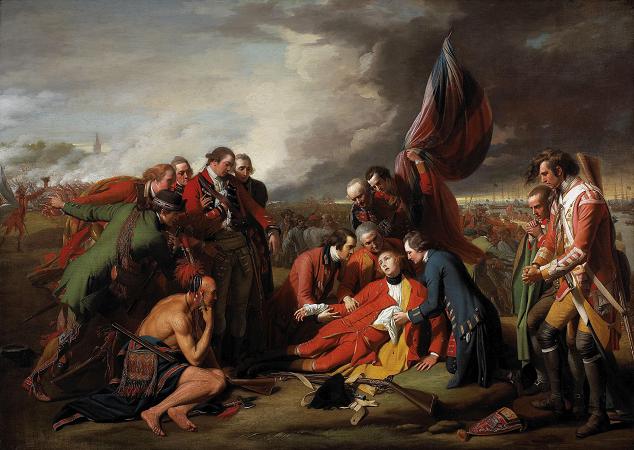National Gallery of Canada. The National Gallery of Canada, located in the capital city of Ottawa, Ontario, is Canada's national art museum. The museum permanent collection includes over 93,000 works from European, American, and Asian, Canadian, and indigenous Canadian artists. The museum's building has 12,400 square metres of physical space, making it one of the largest art museums in North America by exhibition space. The institution was established in 1880 at the Second Supreme Court of Canada building, and moved to the Victoria Memorial Museum building in 1911. In 1913, the Government of Canada passed the National Gallery Act, formally outlined the institution's mandate as a national art museum. The museum was moved to the Lorne building in 1962. In 1988, the museum was relocated to its present location. The National Gallery of Canada is presently situated in a glass and granite building on Sussex Drive with a notable view of the Canadian Parliament buildings on Parliament Hill. The building was designed by Moshe Safdie and opened in 1988. The Gallery was first formed in 1880 by Canada's Governor General, John Campbell, 9th Duke of Argyll in conjunction with the establishment of the Royal Canadian Academy of Arts. In 1882, moved into its first home on Parliament Hill, housed in the Second Supreme Court of Canada Building. In 1911, the Gallery moved to the Victoria Memorial Museum building, sharing it with the National Museum of Natural Sciences. In 1913, the first National Gallery Act was passed, outlining the Gallery's mandate and resources. During the 1920s, the building was expanded, which saw the art gallery expand to four floors, and the creation of a separate entrance for the art museum, and a firewall between the natural sciences museum, and the National Gallery. However, as with the Supreme Court building, its location in the Victoria Memorial Museum building was viewed as a temporary space, with plans to eventually move to a new permanent location, with spaces dedicated to the viewing of art. By the 1950s, the space in the Victoria Memorial Museum building had grown inadequate for the museum's collections. In 1952, the museum launched a design contest for architects to design a permanent home for the gallery. However, the museum failed to garner support from the government of Louis St. Laurent, resulting in the winning bid to eventually be abandoned by the museum. In an effort to provide a workable compromise for the National Gallery, St. Laurent's government offered the National Gallery the eight-storey Lorne office building for use. The National Gallery moved into the nondescript office building on Elgin Street. The building has since been demolished for a 17-storey office building that is to house the Federal Finance Department. In 1962, the museum's director, Charles Comfort, drew criticism after half of the works on display at a exhibition for Walter Chrysler's European works were exposed as forgeries by American journalists. Comfort allowed for the exhibition to be hosted at the museum in spite of receiving advanced warning from the director of the Montreal Museum of Fine Arts. The National Museums of Canada absorbed the National Gallery of Canada in 1968. During the 1970s, the National Gallery saw its funds diverted by the NMC to form regional galleries. The museum completed renovations to the Lorne building in 1976. However by 1980, it had become apparent that the National Gallery would need to relocate from the building, given the poor condition of the building, use of asbestos in the building, and inadequate exhibition areas that only provided the museum enough space to only exhibit two per cent of its collection at any given time. After the Canadian constitution was patriated in 1982, Prime Minister Pierre Trudeau announced a shift in policy focus towards the creation of a nation, with priority given towards the arts in an effort to enrich Canadian identity. In same year, Minister of Communications Francis Fox declared the government's commitment to erect a new permanent buildings for its national museums, including the National Gallery, and the Museum of Man within five years. The director of the National Gallery, Jean Sutherland Boggs, was chosen by Trudeau to oversee construction of the national gallery and museums. The museum began construction for its permanent museum building on Sussex Drive in 1985, and was opened in May 1988. The diversion of funds by the NMC to help fund regional museums was ended in 1982, and the National Museums of Canada formally dissolved in 1987.
more...














